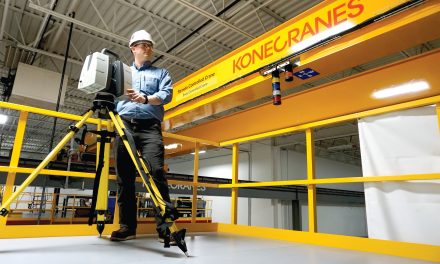 Many food processing companies are regularly faced with handling heavy and viscous materials that cannot be moved by pumps on their own or pumps fed by hoppers. In response to assistance requested by manufacturers of food products that have experienced problems in pumping such media, AxFlow has sought to alleviate this problem by developing a bespoke feed system that also provides the added benefit of reducing wastage of raw materials and semi-processed foods.
Many food processing companies are regularly faced with handling heavy and viscous materials that cannot be moved by pumps on their own or pumps fed by hoppers. In response to assistance requested by manufacturers of food products that have experienced problems in pumping such media, AxFlow has sought to alleviate this problem by developing a bespoke feed system that also provides the added benefit of reducing wastage of raw materials and semi-processed foods.
AxFlow’s feed and pump systems for food processing applications comprises an auger into which ingredients are fed and then forces them into the pump via a screw feed. Capable of transferring media with viscosities in excess of 1,000,000 cp, the system provides the transfer pump with a constant flow at a pressure no greater than 4 bar to maintain the integrity of the product. The system takes the media and moves it into the plump’s inlet port keeping it constantly full, thereby enabling the pump to transfer the media at a metered rate and pressure.
“Our first commercial system was developed for an application in the meat products processing market, where a customer was experiencing difficulties in transferring a steady flow of viscous, but delicate, fluid from a hopper to a homogeniser via a pump,” reports AxFlow’s Malcolm Walker. “Our pump performed exceptionally well in handling the fluid, but in some applications where the nature of the media prevented a steady flow from gravity feed system, the pump was being starved. This resulted in erratic flows to the next stage of the production cycle, in this case the homogeniser and eventually adversely impacting on the producing targets. Our answer to this problem was to design a hygienic screw feed auger which would be placed below the gravity feeder and immediately ahead of the transfer pump.”
Based on the success of this system, AxFlow was able to recommend its application to other customers faced with similar problems. “Whilst the products being made and the demands of the processing systems varied, the common element was the need to deliver a constant flow of material that needed to be handled sensitively so as not to affect the quality and consistency of the finished product,” continues Walker. “Our early systems were custom-built but all featured our Waukesha circumferential piston pumps which are well-proven in food processing applications. Drawing on our experience we have been able to develop a standard auger feed system.”
In order to accommodate a variety of duties, the auger feed systems can be fitted with variable speed drives both to the screw feeder and the pump. Furthermore, the screw feeder can incorporate a bridge breaker for the most challenging of products and the pump supplied with a wide rectangular inlets to ease the flow of product into the pump chamber.
Apart from the satisfaction of eliminating the problem of pump starvation, the auger system optimises the use of raw ingredients and semi-processed products and with certain modifications enables users to recover and rework product that may otherwise have gone for waste. This reduces costs and improves processing efficiency.
A product recovery and reworking system has been built for one client that contains a hopper which funnels the product into a bridge breaker up-stream of the auger loading system. Two contra-rotating stainless steel multi-blade paddles feed the product into the screw and on to the Waukesha pump. All the units are driven by electrical motors with low speed gear reduction and frequency inverters for speed control. The speed controllers for the pre-loading multi-blade paddles and screw auger ensure minimal damage to or shearing of the product. In addition this ensures accurate balanced loading of the pump which transfers the ‘scrap’ directly back into the main mixing system.
“The speed control of the pump facilitates precise, balanced and accurate metering of the product into the process line,” says Walker. “What we are doing is taking the product and metering a proportion of the product into the production process line, i.e. the mixer. This eliminates all the waste.
Money is saved on two counts: firstly the customer eliminates the actual waste itself so all the value of the product is used and secondly, the costs incurred in disposing of the waste are eliminated.





